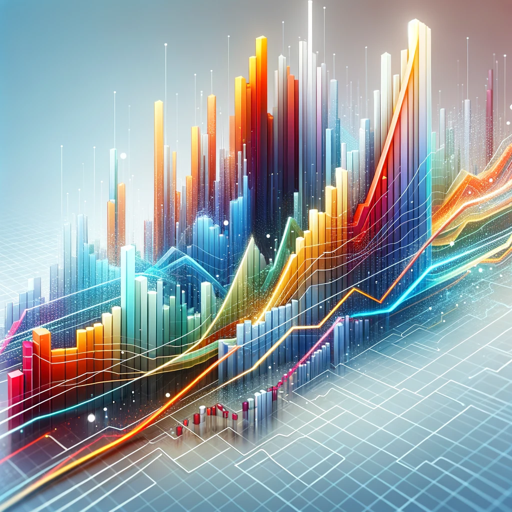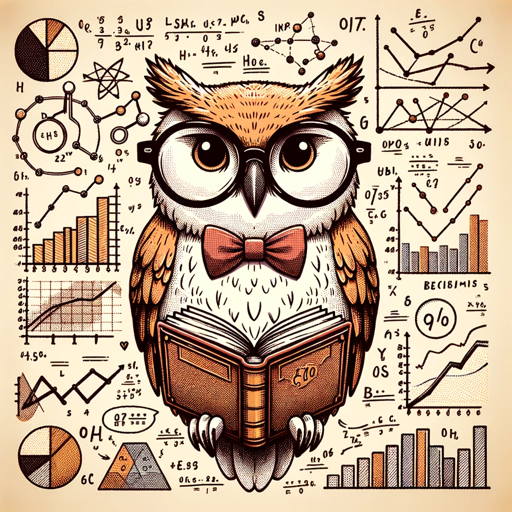Econometrics-econometrics tool for research insights.
AI-powered Econometrics for Data Analysis.
Solves econometrics with precision, insight, and concise math rendering
Solve this econometric problem:
How does this concept apply in econometrics?
Explain the methodology behind this analysis.
Calculate the effect of X on Y using the given data.
Related Tools

Economics Econ
🔷#𝟏 𝐒𝐩𝐞𝐜𝐢𝐚𝐥𝐢𝐳𝐞𝐝 𝐄𝐜𝐨𝐧𝐨𝐦𝐢𝐜𝐬 𝐓𝐮𝐭𝐨𝐫🔷

Macro Economics Expert
AI Robot Macro Economics Expert

Economics + Math 📊
Error checking and explanation in Econ and Math. Designed to support learning by simplifying and clarifying complex subjects in these disciplines. It serves as an excellent support for students & professionals in the field. Last updated May 30, Feedback

Macroeconomics
Expert in macroeconomics, adept at mathematical exercises and Dynare.

Microeconomics
Expert in advanced microeconomics, engaging in thorough explanations and tailored learning experiences.

economy
- a specialized version focused on economic theories, principles and analysis. Designed to help users understand complex economic concepts, engage in economic policy discussions, and provide insight into a variety of economic issues.
20.0 / 5 (200 votes)
Introduction to Econometrics
Econometrics is a branch of economics that applies statistical and mathematical methods to analyze economic data and test hypotheses. It is designed to give empirical content to economic relationships by using data to estimate economic models and verify economic theories. The primary functions of econometrics include estimating economic parameters, testing economic theories, and evaluating the effectiveness of economic policies. For example, econometrics can be used to measure the impact of education on earnings or to determine the effects of policy changes on unemployment rates. Econometricians build models that represent economic phenomena and use statistical techniques to estimate the parameters of these models. Through these models, econometrics helps economists, policymakers, and businesses make informed decisions based on empirical data.

Main Functions of Econometrics
Parameter Estimation
Example
Estimating the effect of education on wages.
Scenario
An economist uses regression analysis to estimate how much additional schooling increases a person's earnings. By collecting data on individuals' education levels and their corresponding wages, econometricians can quantify this relationship, providing a numeric estimate of the return on investment in education.
Hypothesis Testing
Example
Testing the impact of a minimum wage increase on employment.
Scenario
Econometricians formulate a hypothesis, such as 'increasing the minimum wage leads to higher unemployment among low-skilled workers.' Using data before and after the policy change, they apply statistical tests to determine if there is a significant difference in employment levels, thereby validating or refuting the hypothesis.
Forecasting
Example
Predicting future GDP growth.
Scenario
Using historical economic data, such as past GDP figures, investment rates, and consumer spending, econometricians develop models to predict future economic performance. These forecasts help governments and businesses plan for the future, allowing them to make informed decisions regarding investment, policy, and resource allocation.
Ideal Users of Econometrics
Economists and Researchers
Economists and academic researchers are primary users of econometric methods. They utilize econometrics to test theories, estimate economic relationships, and provide empirical support for their research. For instance, an economist might use econometrics to analyze the impact of international trade on domestic employment.
Policy Makers and Government Agencies
Policy makers and government agencies use econometric analysis to inform decisions about economic policies. By understanding the potential outcomes of policy changes, such as tax adjustments or social welfare programs, they can make evidence-based decisions that aim to improve economic well-being.

How to Use Econometrics
1
Visit aichatonline.org for a free trial without login, no need for ChatGPT Plus.
2
Familiarize yourself with key econometric concepts, such as regression analysis, hypothesis testing, and time series analysis. A strong foundation in statistics and economic theory is essential.
3
Identify the research question or problem you want to solve using econometric methods. Clearly define the dependent and independent variables.
4
Choose an appropriate econometric model, such as OLS regression, instrumental variables, or difference-in-differences, based on the nature of your data and research question.
5
Interpret the results carefully, considering statistical significance, potential biases, and the economic relevance of the findings. Utilize diagnostic tests to validate the model's assumptions.
Try other advanced and practical GPTs
Experto en comentarios
AI-Powered Medical Exam Commentary

Flyer Forge AI *Now Powered By Keymate.AI 128k*
AI-powered designs at your fingertips

Indonesia GPT Chat
AI-driven insights and content creation.

Medical Diagnosis Analysis
AI-Powered Medical Diagnosis and Insights

Typescript
Enhance JavaScript with AI-powered typing.

Django Copilot
AI-powered Django development support

Unity GPT
Empower your Unity projects with AI-driven insights and support.

Calc
AI-Powered Calculus Problem Solver

Correcteur Orthographe
AI-powered French spelling and grammar correction

David Goggins
AI-powered mental toughness tool

Mechanical Engineering
AI-Powered Mechanical Engineering Insights

Grammar

- Research
- Data Analysis
- Hypothesis Testing
- Policy Analysis
- Forecasting
Econometrics Q&A
What is Econometrics?
Econometrics is the application of statistical and mathematical models to analyze economic data, allowing researchers to test hypotheses, estimate economic relationships, and make forecasts.
How can I apply Econometrics to real-world problems?
You can apply econometrics to analyze various economic phenomena, such as estimating demand curves, assessing the impact of policy changes, and evaluating the effectiveness of marketing strategies.
What are common econometric models?
Common econometric models include Ordinary Least Squares (OLS) regression, Instrumental Variables (IV) regression, Panel Data models, and Time Series analysis. Each model is suited for different types of data and research questions.
What are the prerequisites for learning Econometrics?
A solid understanding of basic statistics, probability theory, and economic principles is essential. Familiarity with software like R, Stata, or Python can also be beneficial for performing econometric analyses.
How does one ensure the validity of an econometric model?
To ensure validity, you should test the model's assumptions (e.g., linearity, homoscedasticity, independence), perform robustness checks, and consider potential sources of bias, such as omitted variables or measurement errors.